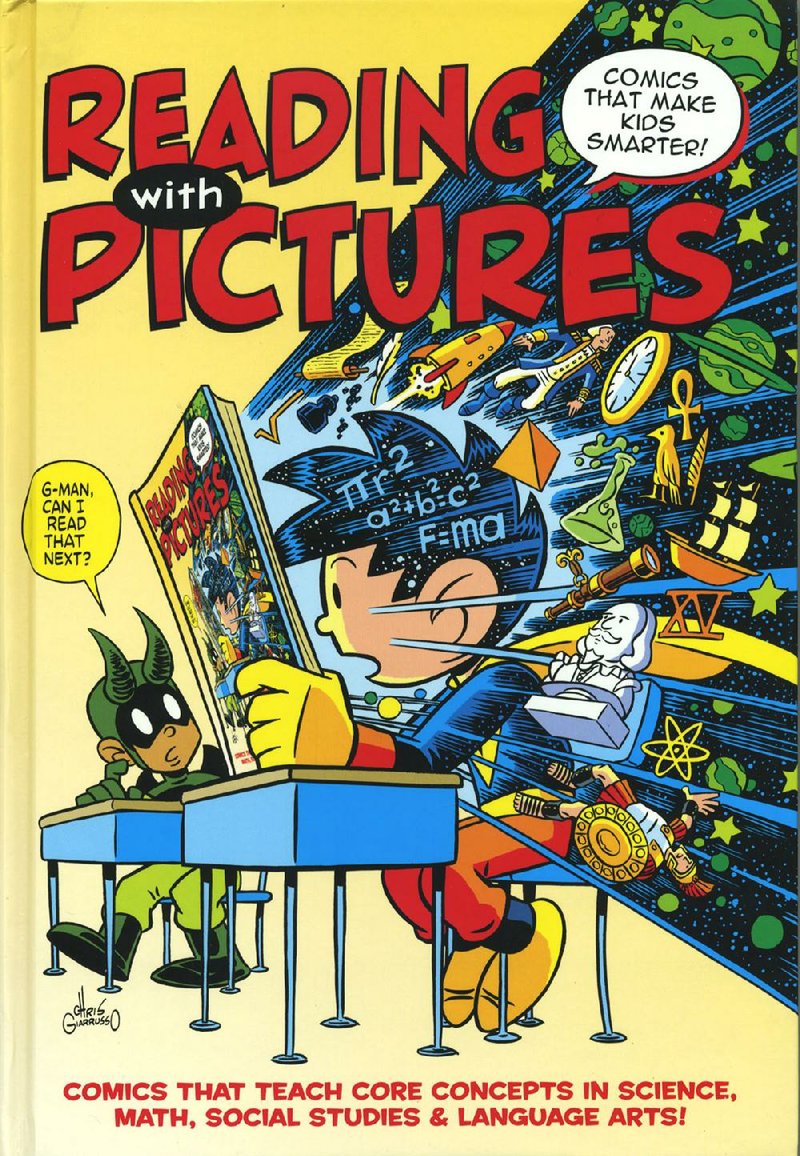Educational comics can be anything from classes to classics -- comics that teach, books that teach about comics, and books on how to be a comics artist:
• Reading With Pictures: Comics That Make Kids Smarter (Andrews McMeel, 2014) collects 15 lessons about math, science, language and social studies in comic-book format for ages 7 to 12.
Cover artist Chris Giarrusso (G-Man) leads off with a tale of malfunctioning robot teachers. G-Man's class learns that "robots will never be able to replace humans." Screwball cartoonist Roger Langridge (Snarked!) illustrates Sir Issac Newton's concept of acceleration by drawing a runaway Jeep.
The book is from Reading With Pictures, a Chicago-based group that promotes comics in the classroom, and it comes with a downloadable teaching guide.
• Bluewater Productions comics include biographies of Hillary Clinton, Michelle Obama and other public figures, with teacher's guides available at bluewaterprod.com.
"I am really proud of the educational value to these comics," some being taught in schools, publisher Darren Davis says. "I was a reluctant reader growing up, and comic books really helped my reading skills."
• Little Rock author William B. Jones' childhood love of Classics Illustrated comics led him to write Classics Illustrated: A Cultural History, Second Edition (McFarland, 2011).
Starting in 1941, Classics Illustrated published a 30-year run of "Stories by the World's Greatest Authors" -- comic-book adaptations of a literary lineup that included Homer, Shakespeare and Dickens.
Jack Lake Productions' current reprint series features Jones' introductions to such works as H.G. Wells' The War of the Worlds and Henry Wadsworth Longfellow's The Song of Hiawatha.
• Cartoonist Will Eisner is best known for his creation of masked crime-fighter The Spirit. But the late artist devoted much of his career to producing instructional comics for the military, convinced that cartoon panels had a future in education.
PS Magazine: The Best of Preventive Monthly (Abrams, 2011) shows the direction that Eisner saw comics taking 50 years ago. He enlisted a bevy of pinup cuties to keep the pages turning, but his advice on how to load a truck was straight on.
• Would-be comics artists can find more new and classic how-to books on the market than all the strands in Spider-Man's web.
Recently published is Christopher Hart's Figure It Out! guide to human proportions (Drawing With Christopher Hart, 2014). Hart's dozens of guides include books on how to draw manga, vampires, superheroes and easy beginner's cartoons made of circles and triangles.
Among the standards, How to Draw Comics the Marvel Way by Stan Lee and John Buscema (Touchstone, 1984) answers such basics as what to draw with (pencil, No. 3 sable brush), and what else is indispensable to a comics professional. A rag is, they say -- comics are messy.
Family on 09/24/2014
